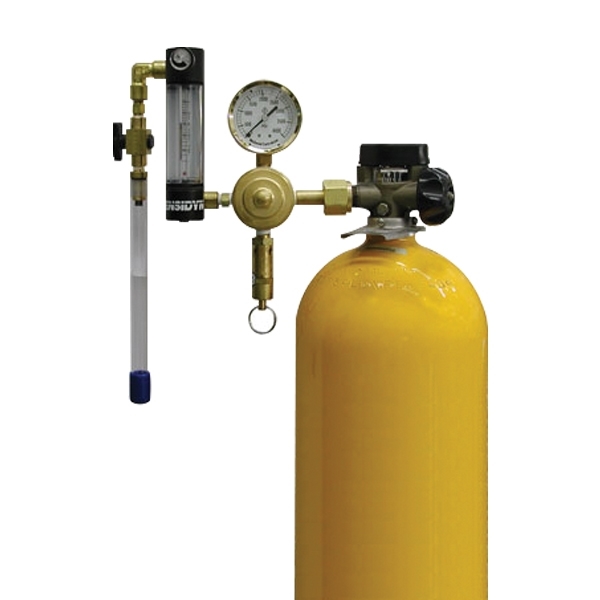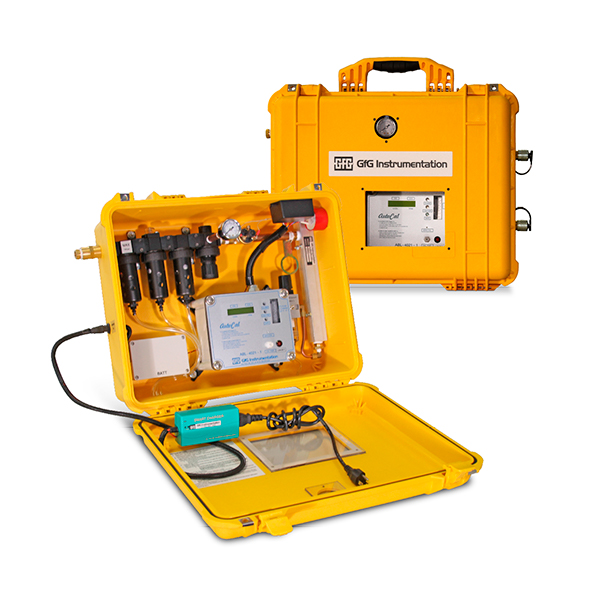
The Respirable Air Monitoring Systems (RAM) is a critical solution for ensuring compliance with occupational health and safety regulations, especially with the new OSHA silica standard. These systems are designed to monitor the inhalable fraction of airborne particulate matter in the workplace, providing real-time data to ensure the exposure levels remain below the permissible limits set by OSHA. With the growing concern about the health hazards posed by silica dust and other particulate matter, RAM systems are becoming increasingly important for industrial and construction companies to protect their workers from respiratory hazards.



Home » Occupational Health and Safety » Respirable Air Monitoring Systems (RAM)
The purpose of Respirable Air Monitoring Systems (RAM) is to measure and monitor the levels of respirable particulates, including dusts, fumes, mists, and vapors, in the air. These systems are used to ensure compliance with occupational health and safety regulations, such as the OSHA Silica Standard, and to protect workers from the harmful effects of inhalable airborne contaminants in the workplace. The goal of RAM is to provide real-time monitoring and accurate measurement of respirable particulates to help prevent workers from being exposed to harmful levels of airborne contaminants.
Respirable Air Monitoring Systems (RAM) measure inhalable particulates by using specialized sensors and/or filters to capture and analyze air samples. These systems are designed to measure particulate matter that is small enough to penetrate deep into the lungs and cause respiratory or health problems. To accurately measure inhalable particulates, RAMs typically use a combination of size-selective sampling and gravimetric analysis. During the sampling process, air is drawn through a size-selective inlet, which removes particles larger than the size of interest, and onto a filter. The filter is then weighed to determine the mass of particulate matter that was collected. This information is used to calculate the concentration of inhalable particulates in the air.
The Respirable Air Monitoring Systems (RAM) play a critical role in ensuring compliance with the OSHA Silica Standard. The OSHA Silica Standard requires employers to monitor worker exposure to respirable crystalline silica and take action to protect workers when exposure levels exceed the permissible exposure limit (PEL). RAMs are designed to measure the concentration of inhalable particulates, including respirable crystalline silica, in the air to determine if workers are exposed to levels that exceed the PEL. This information is used to develop and implement effective control measures to protect workers and ensure compliance with the OSHA Silica Standard.
Respirable Air Monitoring Systems (RAM) are designed to measure inhalable particulates in the air and provide data for compliance with the OSHA Silica Standard. The use of RAM in compliance with the OSHA Silica Standard can provide several benefits, including:
Respirable Air Monitoring Systems (RAM) play a critical role in ensuring worker safety and health by monitoring the air for inhalable particulates that could potentially harm workers. The systems monitor the air for hazardous particles such as silica dust, which can cause respiratory problems if inhaled in large quantities. By using RAM, employers can ensure that workers are not exposed to harmful levels of particulate matter, which can help prevent occupational illnesses and injuries. The data collected by RAM can also be used to identify potential sources of exposure and to implement control measures to reduce worker exposure. By using RAM, employers can help protect workers’ health and ensure compliance with occupational health and safety regulations such as the OSHA Silica Standard.
Respirable Air Monitoring Systems (RAM) play a crucial role in supporting industries in meeting the requirements of the OSHA Silica Standard by providing accurate and reliable measurement of inhalable particulates, including silica dust. This enables industries to monitor and control the exposure of their workers to silica dust, which can cause serious lung damage and other health problems, and to comply with the limits set by the OSHA Silica Standard. By using RAM, industries can demonstrate their commitment to worker safety and health, and avoid potential penalties and legal liabilities associated with non-compliance with the OSHA Silica Standard.
Respirable Air Monitoring Systems (RAM) are designed to measure inhalable particulates in the workplace. Some of the features and capabilities of RAM include:
Inteccon is a leading provider of advanced technology solutions for a wide range of industries. Their innovative products and services help businesses increase efficiency and improve performance. One of their key offerings is the Inteccon Distributed Models, which are designed to address the challenges of modern businesses and offer a new level of control and flexibility for managing complex operations. These models are built with cutting-edge technologies and are designed to meet the needs of businesses of all sizes and in various industries. Whether you’re looking to increase efficiency, reduce costs, or optimize your operations, Inteccon Distributed Models are the ideal solution.
GfG is a company that provides comprehensive gas detection solutions for various industries. With 60 years of experience, GfG is one of the largest suppliers of gas detection systems and gas measuring instruments. The company invests heavily in research and development to continuously improve its products and offers services such as consultation, commissioning, and training to ensure the safety and efficiency of their gas detection systems. In the North and South American market, GfG Instrumentation, Inc provides local support and a national network of partners for fast and cost-effective maintenance and installation. The company values the safety and is dedicated to making a difference by improving every day to protect people, industrial plants, and the environment.
This Carbon Monoxide (CO) sensor is designed for the online monitoring of breathing air systems. It utilizes an electrochemical principle for low maintenance and long life. The sensor is capable of measuring CO levels in the range of 0-99 ppm, displaying the readings on a 2-digit LCD display of 0.5 inches. The device is equipped with an audible and visual alarm set at 10 ppm CO, which can be a crucial safety feature in breathing air systems. It also has NO and NC relays to provide an extra layer of protection. The device has the option to be integrated with a filtration panel that can remove particulate material, oil vapors, and hydrocarbons from the air line, making it suitable for use by up to 8 users with flows of 25, 50, or 100 CFM. The device can be powered through an 11 VAC, 12 VDC, or 9 VDC internal battery.
The GFG Portable Carbon Monoxide (CO) Monitoring System is a reliable and low-maintenance solution for monitoring CO levels in breathing air systems. The system features an electrochemical sensor for accurate CO measurement in the range of 0-99 ppm, with a 0.5″ 2-digit LCD display for easy reading. The system is equipped with an audible and visual alarm set at 10 or 5 ppm CO, ensuring timely notification in case of elevated CO levels. The system is designed with a high-pressure connection of 120 psi, making it easily compatible with virtually any filter panel on the market. The device is also protected with an IP67 degree of protection, making it suitable for use in harsh environments. The system is equipped with a rechargeable battery, providing up to 1000 hours of operation, and also offers options for three-stage filtration panels to accommodate up to 8 users in flows of 25, 50, or 100 CFM.
The compressed air monitoring system is designed to ensure the quality and breathability of compressed air. It features an electrochemical Carbon Monoxide (CO) sensor with a range of 0-99 ppm and an electrochemical oxygen sensor with a range of 0-25% Vol. The system also measures dew point from -112°F to 68°F. It has an optional three-stage filtration panel that effectively removes particulate matter, oil vapors, and hydrocarbons from the air line. The system has a clear LCD display and an audible and visual alarm that alerts the user when CO levels exceed 5 and 10 ppm, oxygen levels fall below 19.5% and 23.5% Vol, and when the dew point reaches 4°F. The housing is made of high-strength NEMA 4X material and has a high-pressure connection of 30 to 145 psi. The system operates on 110 VAC or 12-24 VDC and has a 2-hour charge cycle for up to 24 hours of operation.
The Portable Breathing Air Monitoring System is designed to ensure the safety and quality of breathing air in compressor systems. With its electrochemical sensors for monitoring Carbon Monoxide (CO) and Oxygen (O2), the system provides real-time readings of the air conditions, allowing users to quickly detect any harmful levels of CO and ensure that the air is breathable. The system also features an optional three-stage filtration panel that removes particulate matter, oil vapors, and hydrocarbons from the air line. The compact, portable design, combined with the 2-digit LCD display, audible and visual alarms, and low pressure alarm make this system an ideal solution for monitoring the quality of breathing air in any compressor or air system.
The CBA (Compressed Breathing Air) colorimetric tube kit provides a simple and cost-effective solution for measuring various compounds in breathing air. It comes with a tube holder valve that can hold colorimetric tubes to measure CO2, CO, Oil Mist, Oxygen, and water vapor in compressed breathing air systems. The kit features an adjustable flowmeter that can accommodate flow rates of 50 to 600 cc/min, making it ideal for use with high-pressure air sources of up to 3000 psi. The kit is easy to use and requires no calibration, making it a low-cost solution for monitoring the quality of breathing air.
Tel +1 561-912-9809 / 561-9112-7201
E-mail [email protected]
6590 W Rogers Circle Suite# 11&12
Boca Raton – FL 33487
+1 561-912-9809 / +1 561-912-7201
[email protected]
6590 W Rogers Circle, Suite #11&12
Boca Raton, FL 33487